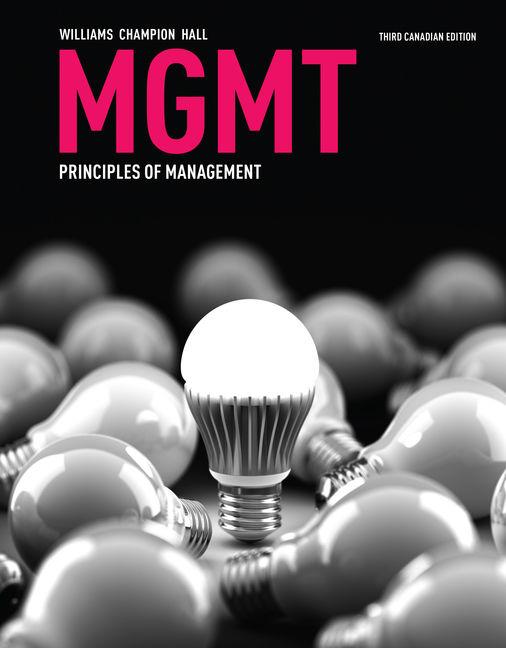Question
Analyze Starbucks's 2022 Starbucks Global Environmental and Social Impact Report. The coffee industry, just like many other fast food and similar industries, face the challenge
Analyze Starbucks's "2022 Starbucks Global Environmental and Social Impact Report". The coffee industry, just like many other fast food and similar industries, face the challenge of waste management. Cups, utensils, and general items are often plastic and without the proper recycling plan in place, these plastics can be harmful to the environment. Additionally, companies in this industry also face waste in regards to product, energy, and water.
Starbucks has taken the initiative to reduce single-use plastics and packaging wastes by piloting reusable or returnable cup programs. This program incentivizes customers to use reusable cups by providing financial and promotional perks through the Starbucks rewards programs. Additionally, Starbucks works closely with recycling and municipal stakeholders to provide advanced recycling access for packaging and disposals. The NextGen Consortium was created by Starbucks to address the single-use food packaging for all food and beverage industries. Starbucks has invested more than fifteen million since 2018.
Starbucks's primary priority is reducing single-use plastics. However, Starbucks has created a plan to reduce greenhouse emission usages by 50%, conserve 50% more water, and reduce 50% of waste sent to landfill from stores by 2030.
Overall, I do believe that the company's efforts are worthwhile. The initiatives that Starbucks has taken actively work to reduce various wastes made by stores. In the long-run, Starbucks will be aiming to better the environment. At this point in our lives, I believe that more companies should be seeking similar strategies to support our planet.
In your replies to at least two peers, contribute to the discussion by sharing the potential repercussions of not taking risks to prioritize sustainability. Examples of how you could contribute to the discussion include the following:
- Provide examples of organizations that experienced the repercussions of not prioritizing sustainability.
- Reflect on how you or people you know might react to organizations and products that don't prioritize sustainability from a consumer perspective. Consider how factors such as age, geographic location, and finances might affect consumers' reactions.
- Name some specific impacts of not remaining competitive in the market based on what you learned from your reading in the Resources section.
- Provide other reasons to justify prioritizing organizational sustainability.
Step by Step Solution
3.36 Rating (159 Votes )
There are 3 Steps involved in it
Step: 1
Potential repercussions of not taking risks to prioritize sustainability There are many potential repercussions of not taking risks to prioritize sustainability Here are a few examples Damage to the e...
Get Instant Access to Expert-Tailored Solutions
See step-by-step solutions with expert insights and AI powered tools for academic success
Step: 2

Step: 3

Ace Your Homework with AI
Get the answers you need in no time with our AI-driven, step-by-step assistance
Get Started


